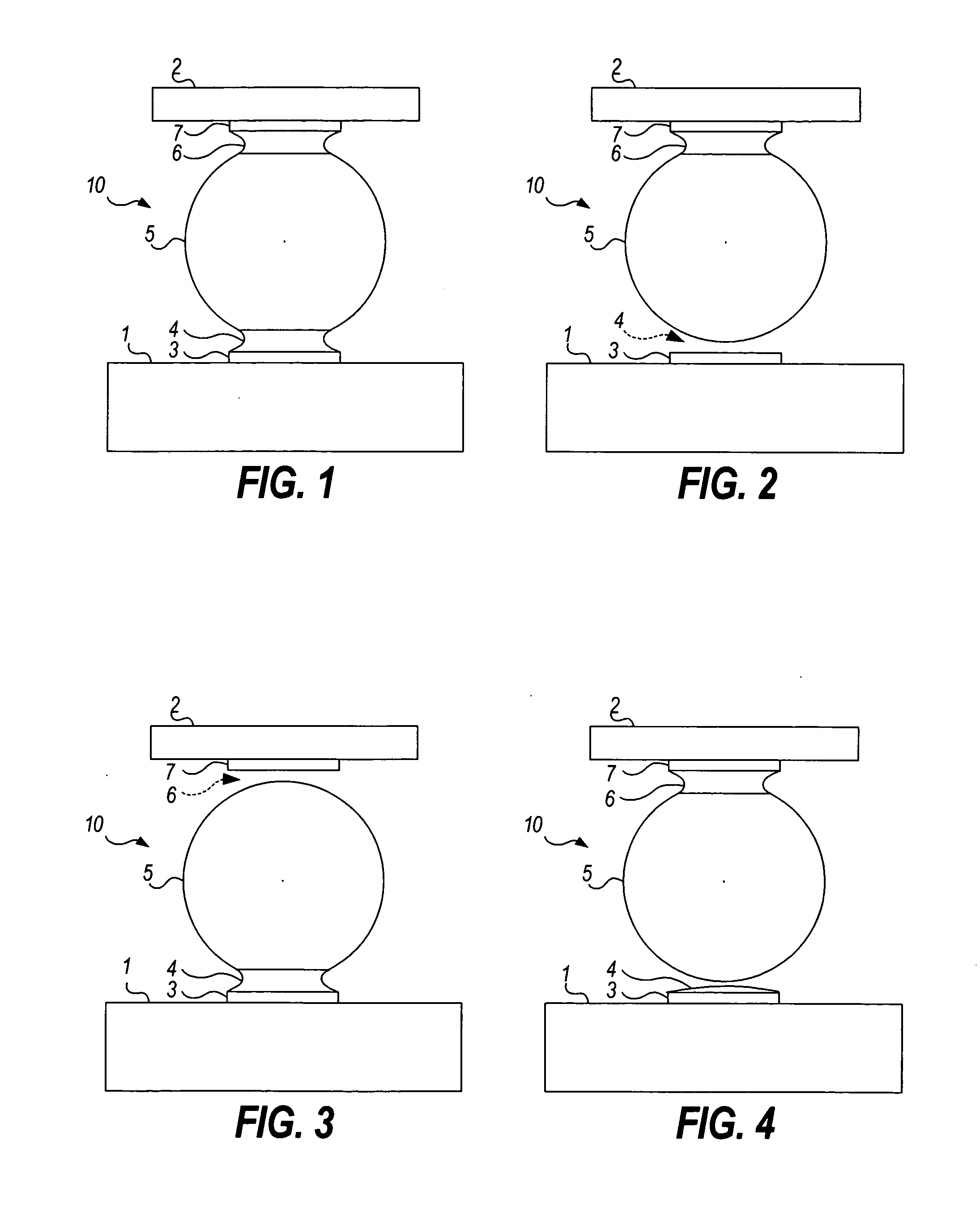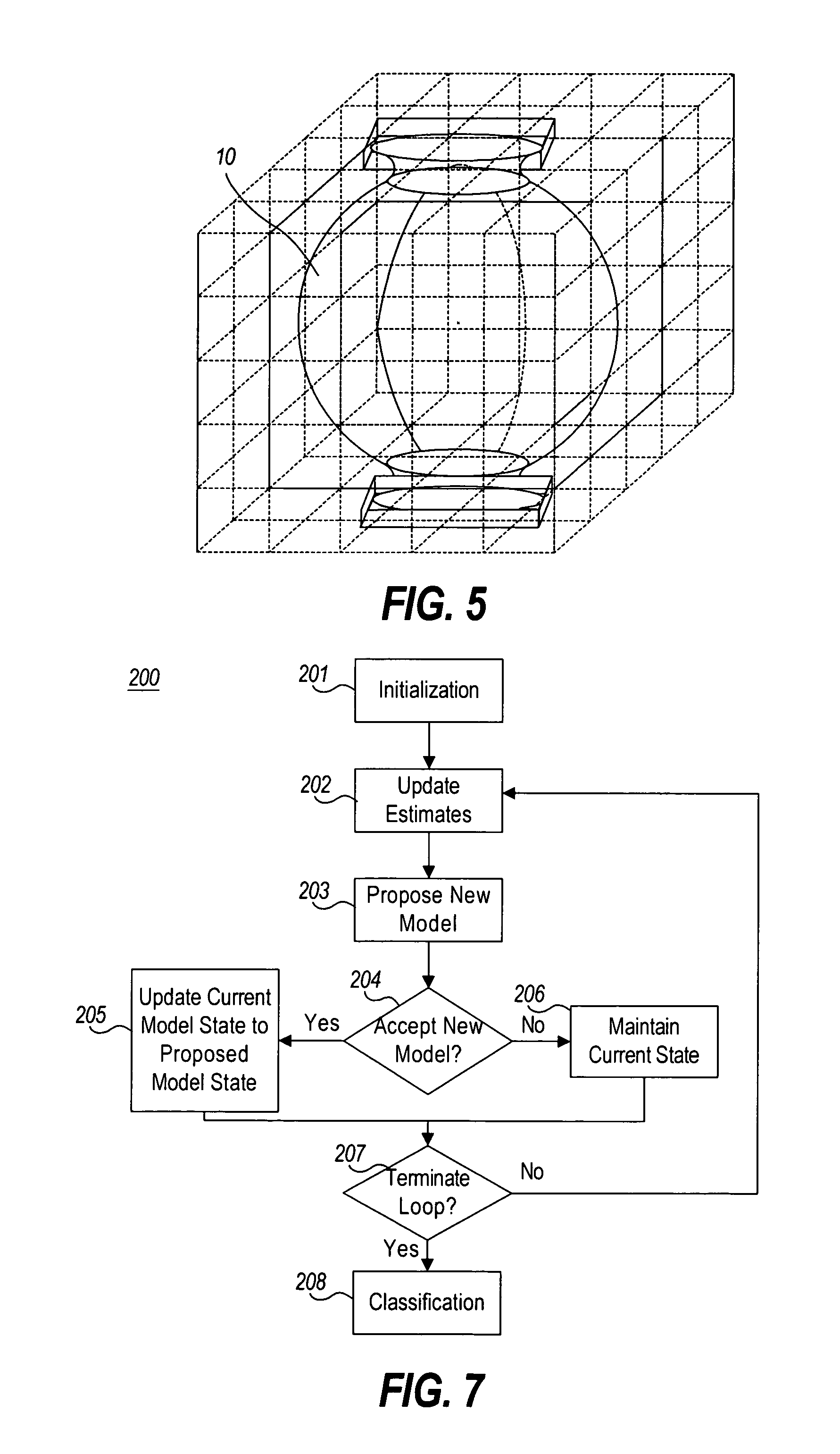Highly constrained tomography for automated inspection of area arrays
a tomography and automated inspection technology, applied in the direction of material analysis using wave/particle radiation, instruments, nuclear engineering, etc., can solve the problems of difficult or impossible to distinguish good joints from bad joints in transmission radiographs, preventing easy interpretation, and affecting the accuracy of the imag
- Summary
- Abstract
- Description
- Claims
- Application Information
AI Technical Summary
Benefits of technology
Problems solved by technology
Method used
Image
Examples
Embodiment Construction
[0041] 1. General Embodiment of the Invention
[0042] Turning now to implementation of the present invention, FIG. 6 shows a block diagram of an automated imaging inspection system 100 in accordance with the invention. As shown therein, the automated imaging inspection system 100 includes a reconstruction engine 120 that reconstructs or estimates an object from a set of projections D of an object under inspection on a device under test 106 that are collected by imaging hardware 108 given a highly constrained model M 102 that is constrained by a set of prior information 101, a set of prior probabilities (or “priors”) P(M) 104, and a forward map 110. As used herein, the term “projections” refers to a set of observations of an object of interest in the form of any type of image modality, where each observation is taken from a different viewpoint. In the illustrative embodiment, the projections are in the form of X-ray images of the object of interest.
[0043] The reconstruction engine 12...
PUM
 Login to View More
Login to View More Abstract
Description
Claims
Application Information
 Login to View More
Login to View More - R&D
- Intellectual Property
- Life Sciences
- Materials
- Tech Scout
- Unparalleled Data Quality
- Higher Quality Content
- 60% Fewer Hallucinations
Browse by: Latest US Patents, China's latest patents, Technical Efficacy Thesaurus, Application Domain, Technology Topic, Popular Technical Reports.
© 2025 PatSnap. All rights reserved.Legal|Privacy policy|Modern Slavery Act Transparency Statement|Sitemap|About US| Contact US: help@patsnap.com



